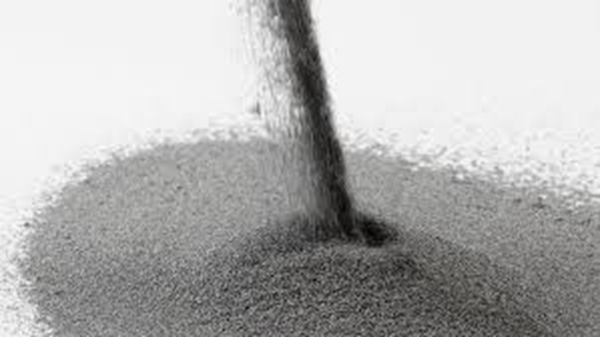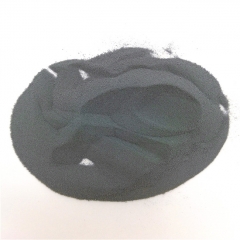Professional industry ceramic supplier, silicon nitride, silicon carbide, aluminum nitride and any other kinds of ceramics.
3D printing technology is a rapidly developing emerging technology in the manufacturing industry. It is called "manufacturing technology with the significance of the industrial revolution" and has become an effective means of modern models. It has been applied to the manufacture of molds and parts in the fields of aerospace, automobile and motorcycle, household appliances, biomedicine, etc., and has a unique position in this field. Status. Engineering and teaching research. 3D printing is based on computer 3D design models. It is a software layered discrete and CNC molding system. It uses laser beams, hot melt nozzles, etc. to make metal powder, ceramic powder, plastic, cell tissue, sand, etc. The materials are combined layer by layer and finally superimposed to form a solid product. The raw materials for 3D printing are very special and must be liquefied, powdered, and silkized.

3D printing metal powder
As the most important part of the 3D printing industry chain of metal parts, 3D printing metal powder is also the most valuable. At the "2013 World 3D Printing Technology Industry Conference", leading experts in the global 3D printing industry made a clear definition of 3D printing metal powder, which refers to a group of metal particles less than 1mm in size. It includes single metal powder, alloy powder and some refractory compound powder with metallic characteristics. Currently, 3D printing metal powder materials include cobalt-chromium alloys, stainless steel, industrial steel, bronze alloys, titanium alloys and nickel-aluminum alloys. However, in addition to good plasticity, 3D printing metal powder must also meet the following conditions: fine powder particle size, narrow particle size distribution, high sphericity, good fluidity and high bulk density.
Preparation process of metal powder
At present, according to the preparation method, the powder preparation method can be mainly divided into reduction method, electrolysis method, carbonyl decomposition method, grinding method, atomization method and so on. Among them, the powder produced by reduction method, electrolysis method and atomization method is widely used as the raw material of powder metallurgy industry. However, the electrolysis method and the reduction method are limited to the production of elemental metal powders, and these methods are not applicable to alloy powders.

Water atomization
In the production of atomized grinding, water atomization is one of the cheap production methods. Because the atomized medium water is not only cheap and easy to obtain, but the atomization efficiency is also excellent. At present, the household water atomization method is mainly used to produce steel powder, diamond tool car body powder, oil-containing pre-alloy powder, hard surface technical powder, iron-based and nickel-based magnetic powder. However, since the specific heat of water is much larger than that of gas, during the atomization process, the broken metal droplets become irregular due to the solidification too fast, which affects the sphericity of the powder. Other metals or alloys with high activity react with water due to contact with water during the atomization process and increase the oxygen content in the powder.
Gas atomization
Gas atomization is one of the main methods for producing metal and alloy powders. The basic principle of gas atomization is the process of breaking the liquid metal stream into droplets, and then solidifying it into powder with a high-speed air stream. Due to its high purity, low oxygen content, controllable powder particle size, low production cost and high sphericity, powder has become the main development direction of high-performance and special alloy powder preparation technology.
Layered atomization
The layered atomization technology was proposed by Nanoval, Germany, etc., which made a significant improvement to the conventional nozzle. Another advantage of this method is low gas consumption, significant economic benefits, and suitable for mass production of most metal powders. The disadvantage is that the technical control is difficult, the atomization process is unstable, and the output is small.
Overview of 3D printing powder:
3D printing powderis a metallic pigment made of stainless steel alloy with good corrosion resistance and durability. Its flake particles can be positioned parallel to the surface of the coating film and distributed throughout the coating film, thereby forming a shield with excellent hiding power Layer strength.
Application of 3D printing powder
3D printing is usually achieved by material printers using digital technology. It is usually used in mold manufacturing, model making in the field of industrial design, and then gradually used in the direct manufacturing of certain products. There are already parts printed using this technology. The technology has been used in jewelry and footwear, industrial design, construction, engineering and construction (AEC), automotive, aerospace, dental and medical industries, education, geographic information systems, civil engineering, firearms and other fields.
Different 3D printing equipment and molding processes require different particle size distributions. At present, the commonly used powder size range for metal 3D printing is 15-53μm (fine powder), 53-105μm (large size), and in some cases can be relaxed to 105-150μm (larger particles).
The choice of metal powder particle size for 3D printing is mainly based on metal printers with different energy sources.
For printers that use laser as energy source, because of its good focus point and easy melting of fine powder, it is suitable to use 15-53μm powder as a consumable material. The powder supply method uses electron beam as energy, so it is more suitable for the melting of coarse powder and suitable for use. -105μm coarse powder.
For coaxial powder feed printers, powders with a particle size of 105 to 150 μm can be used.
3D printing powder price
The price of 3D printing powder will vary randomly with the production cost, transportation cost, international situation, and the market supply and demand of 3D printing powder. Tanki New Materials Co., Ltd aims to help all industries and chemical wholesalers find high-quality, low-cost nanomaterials and chemicals by providing a full set of customized services. If you are looking for 3D printing powder, please feel free to send an inquiry to get the latest price of 3D printing powder.
Suppliers of 3D printing powder:
The supplier of 3D printing powder, Tanki New Material Co., Ltd. has extensive experience in the performance, application and cost-effective manufacturing of advanced and engineered materials. The company has successfully developed a series of powder materials (including oxides, tungsten carbide, and also provides OEM services for high-purity targets, functional ceramics and structural devices.
